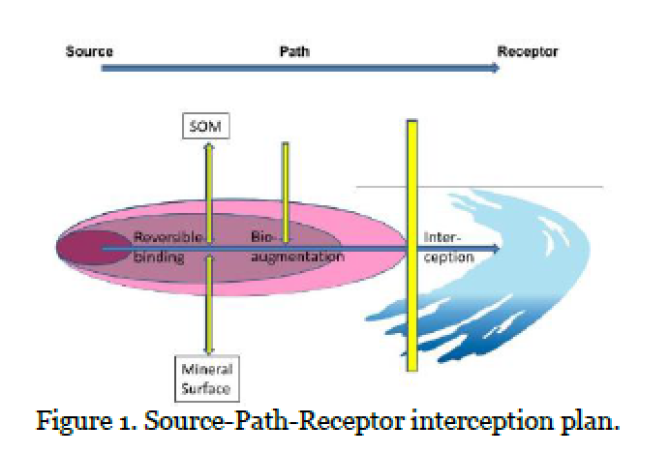
Project
Selective sorption and stimulated biodegradation for sustainable use of large-scale industrial sites
Industrial waste and spillage is taken care of to the best of experience and knowledge. However, toxic compounds from industries, such as chlorobenzenes, aromatic sulfonic acids and benzene, can be present in soil and groundwater at industrial sites. Especially when groundwater flows directly into surface water, this can allow pollutants to spread over large areas.
One of the difficulties of treating a variety of contaminants is the complexity of obtaining optimal conditions to allow degradation of all of the different types of pollutants. For example conversion of chlorobenzenes and aromatic sulfonic acids can occur in presence of an electron donor such as yeast extract, lactate or acetate [1, 2]. Benzene conversion requires an electron acceptor, such as oxygen, nitrate, iron(III) or sulfate [3]. Chlorobenzenes and aromatic sulfonic acids can also be degraded in the presence of an electron acceptor [4, 5]. Furthermore, bacteria that are mediating the conversion of these pollutants, are necessary. In order to thrive, these bacteria require sufficient bioavailability of the pollutants, which should not be in a too high concentration or toxic level. The concentration of contaminants can possibly be controlled by sorbents. In this project such challenges will be addressed and optimal degradation of a mixture of chlorobenzenes, aromatic sulfonic acids and benzene will be studied.
Technological challenge
By coupling geochemical, (micro)biological and molecular biological data, a Source-Path-Receptor interception plan will be composed for remediation of contaminated large-scale industrial sites (Figure 1). In this project the aim is to deliver the proof-ofprinciple of this interception plan. Batch tests in serum flasks will be used to focus on biodegradation of chlorobenzenes, aromatic sulfonic acids and benzenes. Furthermore, bioreactors will be designed for continuous experiments studying mixtures of pollutants as well as environmental conditions that will be defined based on the batch tests.
Main principles
- Stimulation of pollutant biodegradation by different environmental conditions.
- Controlling level and localization of pollutant biodegradation by sorbents.
- Creating a suitable habitat for bacteria involved in the bioconversion of environmental pollutants.

References
- Nelson, J.L., et al., Environ Sci Technol, 2011. 45(16): p. 6806-6813.
- Liang, X., et al., Environ Sci Technol, 2013. 47(5): p. 2378-2385.
- Vogt, C., et al., Microb Biotechnol, 2011. 4(6): p. 710-724.
- Nishino, S.F., et al., Appl Environ Microbiol, 1992. 58(5): p. 1719.
- Thurnheer, T., et al., Biodegradation, 1990. 1(1): p. 55-64.